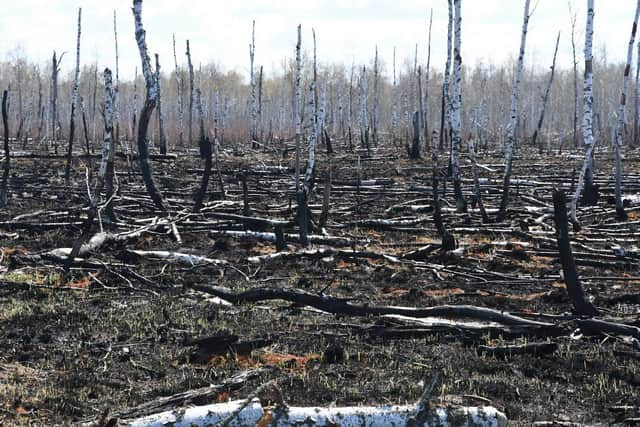COP26: The consequences of climate change for the Ukraine
I'm now 22 and forced to admit that sadly my children won’t get to experience these walks from the forest. Spaces like this in Ukraine are increasingly exposed to natural disasters due to global climate change.
Over the past 30 years, the average temperature in Ukraine has risen by 1.2C.
Advertisement
Hide AdAdvertisement
Hide AdThe precipitation decrease and forest floor moisture were at an all-time high last year.


At the slightest contact with fire, dry forest flares up instantly. A similar scenario happened last spring, with dangerous consequences.
During the spring of 2020, the fire touched the most dangerous zone in Ukraine, Chernobyl, burning houses, trees, grounds, entirely soaked by radiation since the 1986 nuclear reactor explosion.
The radiation level in the centre of the fire then exceeded the norm and this made Ukrainians and the whole world worry, whilst fire fighters worked relentlessly to put the fire out.


The fire destroyed thousand hectares of territory and thousands of animals were brutally burned alive.
This was a sign for the authorities – we need to start adapting to new weather realities. After all, these fires are predicted to become even more frequent.
Slightly revealing the details, Chernobyl is a two-hour drive from Kyiv, the capital of Ukraine, where I live.
About 3 million people woke up witnessing smog from their windows – Chernobyl wind brought it to the city from fires.
Advertisement
Hide AdAdvertisement
Hide AdLocal communities took immediate action, closing the windows and wearing masks.
This fire did not lead to victims, unlike the one that began in July of the same year in eastern Ukraine – in the Luhansk region – it was liquidated, but the fire broke out again in October.
That blaze destroyed about 25 thousand hectares of forest, more than 700 houses burned down and 17 people died.
In an interview for The Babel, a local Luhansk resident shared his experience, saying: "When I saw a glow outside the window, I gathered everything that came under my arm and pushed a wife out of the house.
"I ran to start the car to get away from the fire. I thought my wife was already somewhere on the road. but for some reason she ran to the house for the documents.
"I drove out the gate, I thought she had run away. I shouted through the smoke. I screamed, hoping that she was somewhere outside the yard. And then I realised, she was in the house."
Tragedies like these make me think if we are doing enough to avoid the effects of human impact on the environment.
Ukraine's nationally determined contribution, which we plan to present at COP26, is a 65 per cent reduction in greenhouse gas emissions from the 1990 level.
Advertisement
Hide AdAdvertisement
Hide AdBut until the nations responsible for half of the world's emissions present more ambitious plans, Ukraine and many other vulnerable developing countries face a sad reality.
- Anastasiia Zagoruichyk is a journalist based in Ukraine. This article is part of The Scotsman and Earth Journalism Network partnership – set up by global non-profit organisation Internews.
Comments
Want to join the conversation? Please or to comment on this article.
